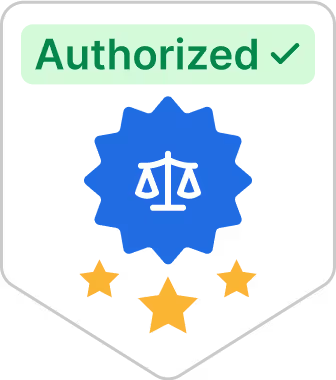How Much Financial Aid Can You Expect to Receive for College?

A college degree is a life goal for many—one that can increase your potential earnings, pave the way for new job opportunities, and help you achieve personal and professional goals alike. But the cost of attending college is a barrier many aspiring students struggle to overcome. An undergraduate degree can run as much as $102,828 for in-state students and up to $173,684 for those out of state.1
When faced with those kinds of numbers, it’s natural to wonder: “How much financial aid can I get?”
When it comes to financing your college education, you have several options—including federally funded student loans, private loans, federal and private grants, and more. Many students end up meeting tuition and housing costs by combining multiple funding options, but funding limits do apply.
Wondering how much help might be available to fund your college education? Here’s the full breakdown of federal financial aid.
Federally Funded Student Aid: Aid Types & Limits
The United States government issues different types of financial aid to students at the undergraduate and graduate levels to help cover tuition fees, housing costs, and other expenses associated with higher education. Government-backed aid is available in a few different forms. These include:
- Student loans
- Pell Grants
- Supplemental Opportunity Grants
- Work-study opportunities
Each type of funding carries its own stipulations with regard to eligibility and how much financial aid you can receive, among other factors. But to access any federal aid, you need to fill out the FAFSA.
The Free Application for Federal Student Aid (FAFSA) is the primary tool the government uses to determine eligibility for all types of federally funded student aid. It considers factors like an individual or family’s income level, household size, and education history to decide funding limits based on financial need.
Limits vary depending on the specific type of aid, but most students receive around $9,000 per academic year.2 Student loans are by far the most common type of federal aid, accounting for more than half of all funding. Let’s examine each option.
Federal Student Loans
Federal student loans are one of the most popular forms of financial aid. In fact, 42.8 million Americans carry a combined $1.75 trillion in federal student loan debt.3 But are there limits on how much funding students can expect to receive from the federal government? In fact, the answer is yes.
However, limits depend on multiple factors—such as what year of school you’re in, whether you’re supported by your parents, and how much your school approves you to borrow.
First, it’s important to understand the different types of loans available:4
- Direct Subsidized Loans – Subsidized loans are issued based on the need of undergraduate students only.4 Borrowers are exempt from paying interest while they study and during deferment periods.
- Direct Unsubsidized Loans – Available to undergraduate and graduate students, financial need does not determine eligibility for unsubsidized loans.4
- Direct Grad PLUS Loans – Graduate students may seek financial aid in the form of Grad PLUS loans. Financial need is not a consideration, but credit history is. Qualification can be difficult with a poor credit rating.
- Direct Parent PLUS Loans – These loans are issued to parents of graduate students. Like they do for a Grad PLUS loan, credit score requirements apply.
Now, let’s take a look at the loan limits established by the federal government. Annual loan limits for dependent undergraduates (meaning, those who receive support from their parents) include:5
- First-year students – $5,500 total, with a limit of $3,500 for subsidized loans.
- Second-year students – $6,500 total, with a limit of $4,500 for subsidized loans.
- Third-year students and beyond – $7,500 total, with a limit of $5,500 for subsidized loans.
Meanwhile, independent students (those who fully support themselves) benefit from slightly higher loan limits:
- First-year students – $9,500 total, with a limit of $3,500 for subsidized loans.
- Second-year students – $10,500 total, with a limit of $4,500 for subsidized loans.
- Third-year students and beyond – $12,500 total, with a limit of $5,500 for subsidized loans.
Aside from the annual limits, both dependent and independent undergraduate students may only borrow up to a certain amount for their entire education:
- Dependent students are subject to a loan limit of $31,000 for their education, with a maximum of $23,000 for subsidized loans.
- Independent students are subject to a loan limit of $57,500, also with a maximum of $23,000 for subsidized loans.
Note that limits also exist for graduate students, who can borrow up to $20,500 per year in unsubsidized loans. Graduate or professional students are also subject to a total loan limit of $138,500, which includes any loans they received as an undergraduate.
Federal Grants & Work-Study
Grants are another type of financial aid funded by the government. Generally speaking, you don’t have to pay back grant money.
There are two types of federal education grants:
- Pell Grants – Undergraduate students in dire financial situations may be eligible for a federal Pell Grant.6 Grants are awarded up to $6,245, although most students receive closer to $4,000.2
- Supplemental Educational Opportunity Grant – These grants are reserved for severely for the most financially needy undergraduate students who may receive up to $4,000 a year.7 That said, funding limits can depend on multiple factors, such as funding availability, other financial aid, and when you submit your application. These grants are managed and disbursed by individual schools and are not available at all colleges.
Meanwhile, Federal Work-Study is a program that allows students to work part-time to pay for their education, generally in a field related to their course of study. There are no funding limits for work-study aid, although students rarely earn more than $4,000 per year. The average is closer to $2,300.2
Simplify Your Application Process with GOV+
If you’re planning to apply for federal financial aid eligibility, the process may seem daunting—but having all the help you need with your application can lift a weight off your shoulders.
At GOV+, we’re here to help eliminate the hurdles of paperwork and application processes so that you can focus on what’s important to you. Our innovative solutions help to keep your information safe and all in one place—all with the goal of making those complex forms as simple and secure as possible.
We are also here to answer any of your FAFSA FAQs, so whether you’re wondering if you can get financial aid for graduate school or are just looking for a simple FAFSA guide, we’re here to help.
Heading to school soon? Contact GOV+ to see how we can help.
Sources:
1. EducationData.org. Average Cost of College (2022): Yearly Tuition & Expenses. https://educationdata.org/average-cost-of-college#
2. Saving for College. How Much Money Can You Get from the FAFSA? https://www.savingforcollege.com/article/how-much-money-can-you-get-from-the-fafsa
3. Educationdata.org. Student Loan Debt Statistics (2022): Average & Total Debt. https://educationdata.org/student-loan-debt-statistics#
4. StudentAid.gov. What types of federal student loans are available? https://studentaid.gov/help-center/answers/article/what-types-of-federal-student-loans-available
5. StudentAid.gov. Subsidized and Unsubsidized Loans. https://studentaid.gov/understand-aid/types/loans/subsidized-unsubsidized
6. StudentAid.gov. Federal Pell Grants. https://studentaid.gov/understand-aid/types/grants/pell
7. StudentAid.gov. FSEOG (Grants). https://studentaid.gov/understand-aid/types/grants/fseog























